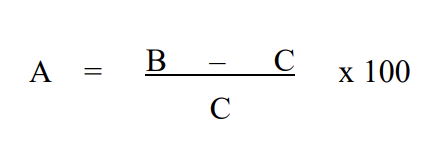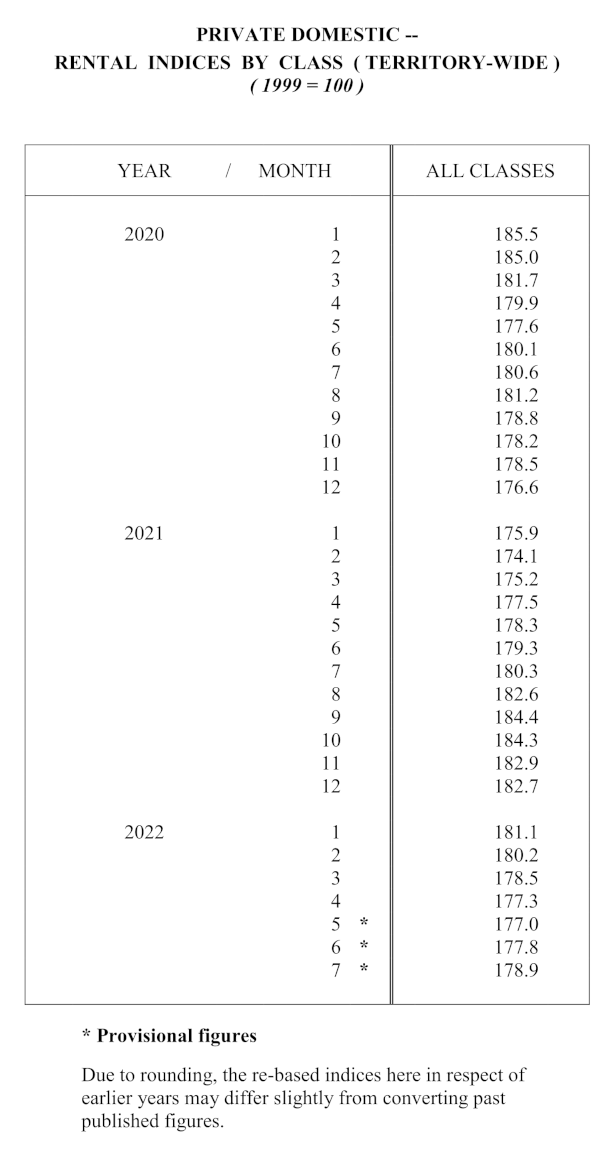f) Rent Regulations
To protect tenants from arbitrary rent increases by landlords and to lower their rental burden, Part IVA of the Landlord and Tenant (Consolidation) Ordinance (Cap. 7) imposes a cap on the rate of rent increase between the first term tenancy and the second term tenancy of a regulated cycle.
First term tenancy
A landlord and a tenant may enter into a first term tenancy on a subdivided unit at a rent agreed by the parties.
Second term tenancy
The amount of rent for the second term tenancy as agreed by the landlord and the tenant must not exceed the maximum amount of rent permitted under Part IVA of the Ordinance.
Specifically, in the same regulated cycle, the rate of rent increase for the second tenancy must not exceed:
- the percentage change of the rental index in respect of all classes of private domestic properties compiled and published by the Rating and Valuation Department (“RVD”) in the relevant period (“control percentage”); or
- 10%,
whichever is the lower. If the relevant change of the above RVD rental index is negative, the rent of the second term tenancy must be reduced by at least the same percentage.
This would help rein in any rent increase of subdivided units in tandem with the overall movement of the private domestic rental market while enabling landlords of subdivided units to earn a return on their properties which is broadly in line with the prevailing yield in the private domestic rental market. whichever is the lower.
During tenancy term
Be it a first term tenancy or a second term tenancy, the rent cannot be increased during the term. The landlord may, upon notifying the tenant in writing, reduce the amount of rent payable by the tenant at any time during the term.
Calculation of the “control percentage”
The following formula would be used to calculate the “control percentage”:

- A - means the control percentage
- B - means the figure of the rental index of the 4th calendar month immediately before the commencement month of the purported second term tenancy that is prevailing on the first day of the offer period
- C - means the figure of the rental index of the commencement month of the first term tenancy that is prevailing on the first day of the offer period
Offer period, in relation to a second term offer, means the period of the second calendar month immediately before the calendar month in which the purported second term tenancy commences.
The table below gives the monthly change in RVD’s Private Domestic Rental Index (all classes) between January 2020 and July 2022.
Let’s illustrate how to determine the maximum rent value to be offered for the second term tenancy in a hypothetical case. Suppose a landlord is going to offer a second term tenancy starting on 1 October 2022 (Note: In reality, the first offer of the second term tenancy in compliance with the Ordinance is expected to take place for tenancy starting on 22 January 2024 or later.):
- B: Identify the rental index of the 4th calendar month immediately before the commencement month of the purported second term tenancy. In this case, the rental index for June 2022, i.e., 177.8 should be applied.
- C: Identify the rental index of the commencement month of the first term tenancy. In this case, the rental index for October 2020, i.e., 178.2 should be applied.
- A: Using the formula above, we obtain that the rental index has fallen by 0.22% in the period. The maximum rent to be offered for the second term tenancy should be at least 0.22% lower than the existing rent in the first term.

Source: https://www.rvd.gov.hk/en/publications/property_market_statistics.html



 Print
Print Email
Email
